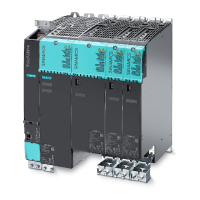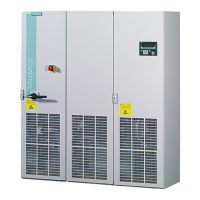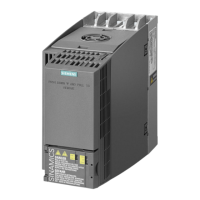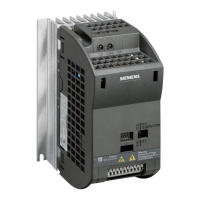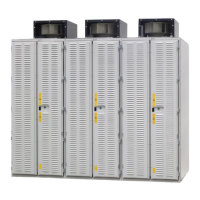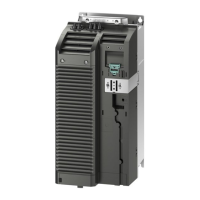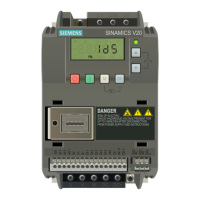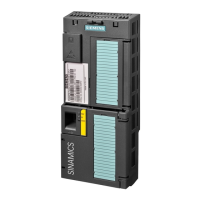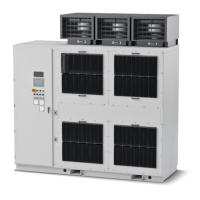Cabinet design and EMC Booksize
12.7 Connection systems
Booksize Power Units
Manual, (GH2), 07/2016, 6SL3097-4AC00-0BP8
719
Table 12- 25 Connectable conductor cross-sections Part 4: Line supply cable
Connection cross-section [mm
2
]
Terminal type/tightening torque
Basic Line Module 40 kW
Line cable connection
Screw terminal
6 Nm
x x x - - -
Basic Line Module 100 kW
1)
Threaded bolts M8
- - - x x x
Alternatively, two ring cable lugs without insulation for the parallel connection of 2 cables with a maximum cross-section
of 50 mm² can also be connected to the threaded bolts respectively. Both cable lugs should be mounted "back to back".
Danger to life as a result of power cables overheating when permissible cross-sections are
fallen below
Excessively thin power cables can result in overheating. This can result in severe injury or
death due to fire and smoke.
• Only use power cables with sufficiently large cross-sections. Take into account the
routing type, ambient temperature and cable length.
• If smaller cross-sections are selected, you must ensure the appropriate level of
conductor protection in another way, e.g. by suitably setting the control parameters.
Note
Compliance with IPXXB degree of protection for Basic Line Modules 40 kW
Degree of protection IPXXB according to IEC
60529 for the Basic Line Module 40
kW is only
obtained when power cables with insulated end sleeves and cross
-sections > 25 mm
2
are
Note
Selection of the line supply conductor
When selecting the line supply conductor, note the loop resistance so t
hat the relevant
protective components (line fuse, RCCB, etc.) function properly and that no hazardous shock
currents or voltages occur in the event of a fault.
If the apparent impedance of the line supply at the infeed point is not suitable, so that fuses
do not rupture in the specified time in the case of insulation failure (ground fault, fault to
frame), then you must use additional fault current protective devices RCD (RCCB or MRCD),
Type
B to protect personnel and protect against fire.
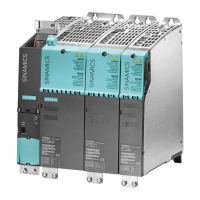
